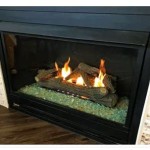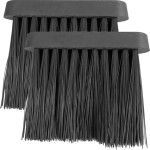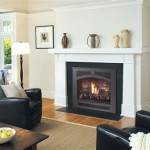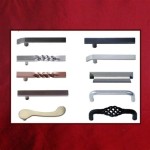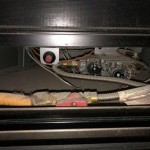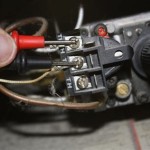How To Hang A Mantle On A Stone Fireplace
Adding a mantle to a stone fireplace can dramatically enhance its aesthetic appeal, transforming it from a functional heating element into a focal point within a room. However, securing a mantle to a stone surface presents unique challenges compared to working with wood or drywall. Stone is inherently dense and can be difficult to drill into without the proper tools and techniques. A poorly executed installation not only risks damaging the stone but also compromises the stability of the mantle, potentially leading to its eventual collapse. Therefore, understanding the preparatory steps, required materials, and installation procedures is crucial to achieving a secure and visually appealing result.
Before embarking on the installation, it is essential to carefully consider the mantle's dimensions and weight in relation to the fireplace's size and structure. A mantle that is disproportionately large can overwhelm the fireplace, while one that is too small may appear insignificant. Furthermore, the weight of the mantle must be adequately supported by the anchoring system to prevent sagging or detachment. The type of stone used in the fireplace also plays a critical role, as different types of stone possess varying degrees of hardness and porosity, influencing the choice of drill bits and anchors.
Preparing for the Installation
The initial phase of hanging a mantle on a stone fireplace involves meticulous planning and preparation. This encompasses accurately measuring the desired mantle position, selecting the appropriate hardware, and ensuring the necessary tools are readily available. Neglecting these preliminary steps can lead to inaccuracies during installation, resulting in a misaligned or unstable mantle.
First, determine the precise location for the mantle on the stone fireplace. Use a level and measuring tape to mark the intended position with accuracy. Consider the height of the firebox opening and any existing architectural features of the fireplace to ensure the mantle is aesthetically balanced and does not obstruct the functionality of the fireplace. A common guideline is to position the mantle at least 12 inches above the firebox opening, although this can be adjusted based on personal preference and the specific design of the fireplace and mantle.
Next, select the appropriate hardware for securing the mantle to the stone. Avoid using nails or screws directly into the stone, as these will not provide adequate holding power. Instead, use heavy-duty anchors designed for masonry or stone. Options include sleeve anchors, wedge anchors, or epoxy-based anchoring systems. Sleeve anchors are suitable for lighter mantles, while wedge anchors and epoxy-based systems offer superior strength for heavier mantles. The size and quantity of anchors required will depend on the weight and dimensions of the mantle, as well as the type of stone used in the fireplace. Consult with a hardware specialist to determine the optimal anchor system for the specific application.
Gather all the necessary tools before commencing the installation. Essential tools include a hammer drill with masonry bits, a level, a measuring tape, a pencil or marker, safety glasses, ear protection, a hammer, a socket wrench or adjustable wrench (depending on the type of anchors used), and a stud finder (to locate any studs behind drywall or paneling adjacent to the fireplace if applicable). A dust mask is also recommended to prevent inhalation of stone dust during drilling.
Drilling into the Stone
Drilling into stone requires specialized techniques and equipment to prevent cracking or chipping the stone. A hammer drill with a high-quality masonry bit is essential for creating clean, precise holes without damaging the surrounding stone. The drilling process should be approached with patience and precision to ensure the anchors are securely seated and the mantle is properly supported.
Before drilling, mark the locations for the anchor holes on the stone fireplace. Use the mantle as a template to ensure the holes are accurately aligned with the mounting points on the mantle. Use a level to verify that the marks are horizontally aligned. If the mantle has recessed mounting points, carefully measure the depth of the recesses to ensure the anchors will be properly concealed.
When drilling into stone, always wear safety glasses and ear protection to protect against flying debris and loud noise. Start by drilling a pilot hole using a smaller masonry bit. This will help guide the larger bit and prevent it from wandering. Apply steady, even pressure while drilling, allowing the hammer drill to do the work. Avoid forcing the drill bit, as this can cause it to overheat or break. Periodically remove the drill bit to clear away stone dust and prevent clogging. Gradually increase the size of the drill bit until it matches the diameter of the anchors being used.
Drill the holes to the depth specified by the anchor manufacturer. Avoid drilling too deep, as this can weaken the surrounding stone. After drilling each hole, use a vacuum cleaner or compressed air to remove any remaining stone dust. This will ensure the anchors are properly seated and provide maximum holding power.
Securing the Mantle
The final step involves attaching the mantle to the stone fireplace using the selected anchors. This process requires careful attention to detail to ensure the mantle is securely fastened and level. The type of anchors used will dictate the specific installation procedure, so it is essential to follow the manufacturer's instructions closely.
Insert the anchors into the pre-drilled holes. For sleeve anchors, insert the anchor body into the hole and then tighten the nut or bolt to expand the sleeve and secure the anchor in place. For wedge anchors, insert the anchor body into the hole and then strike the pin to expand the wedge and lock the anchor in position. For epoxy-based anchoring systems, inject the epoxy into the hole and then insert the anchor stud. Allow the epoxy to cure completely before attaching the mantle.
Carefully lift the mantle into position and align it with the anchors. If the mantle is heavy, enlist the help of another person to prevent injury. Attach the mantle to the anchors using washers and nuts or bolts, as appropriate. Tighten the fasteners gradually and evenly to avoid putting undue stress on the stone or the mantle. Use a level to verify that the mantle is perfectly horizontal. If necessary, use shims to make minor adjustments to the level.
Once the mantle is securely fastened, inspect the installation to ensure all anchors are properly seated and the mantle is stable. Conceal the anchors with decorative caps or covers, if desired. Clean any dust or debris from the mantle and the surrounding fireplace area. The newly installed mantle should now provide a functional and aesthetically pleasing addition to the stone fireplace.
Proper maintenance is critical to keeping the mantle looking good and secure over the long term. Periodic dusting and cleaning can help preserve its appearance. It is also crucial to periodically inspect the anchors and ensure they are securely tightened. Any signs of loosening or damage should be promptly addressed to prevent the mantle from becoming unstable. With proper care and maintenance, a mantle installed on a stone fireplace can provide years of beauty and enjoyment.

How To Build And Hang A Mantel On Stone Fireplace Shanty 2 Chic

How To Build And Hang A Mantel On Stone Fireplace Shanty 2 Chic

Fireplace Mantel Installation Before And After

Installing And Making A Floating Mantle For Our Stone Fireplace

How To Build And Hang A Mantel On Stone Fireplace Shanty 2 Chic

Installing And Making A Floating Mantle For Our Stone Fireplace

Guide Mantel Installation On A Stone Fireplace

Installing A Wood Mantel On Stone Wall Remodelaholic

Fireplace Mantel Installation Before And After

Installing A Wood Mantel On Stone Wall Remodelaholic

